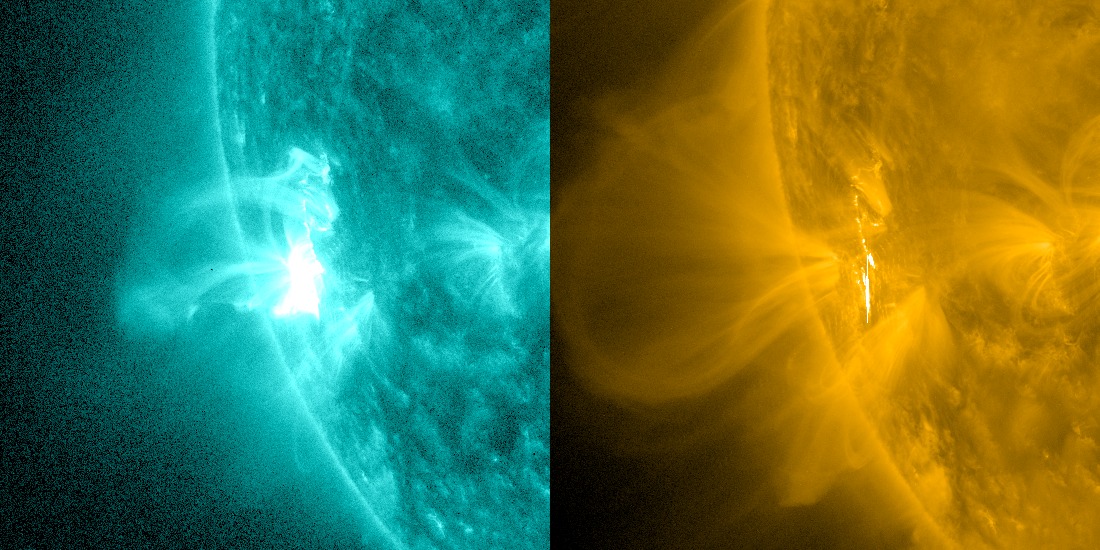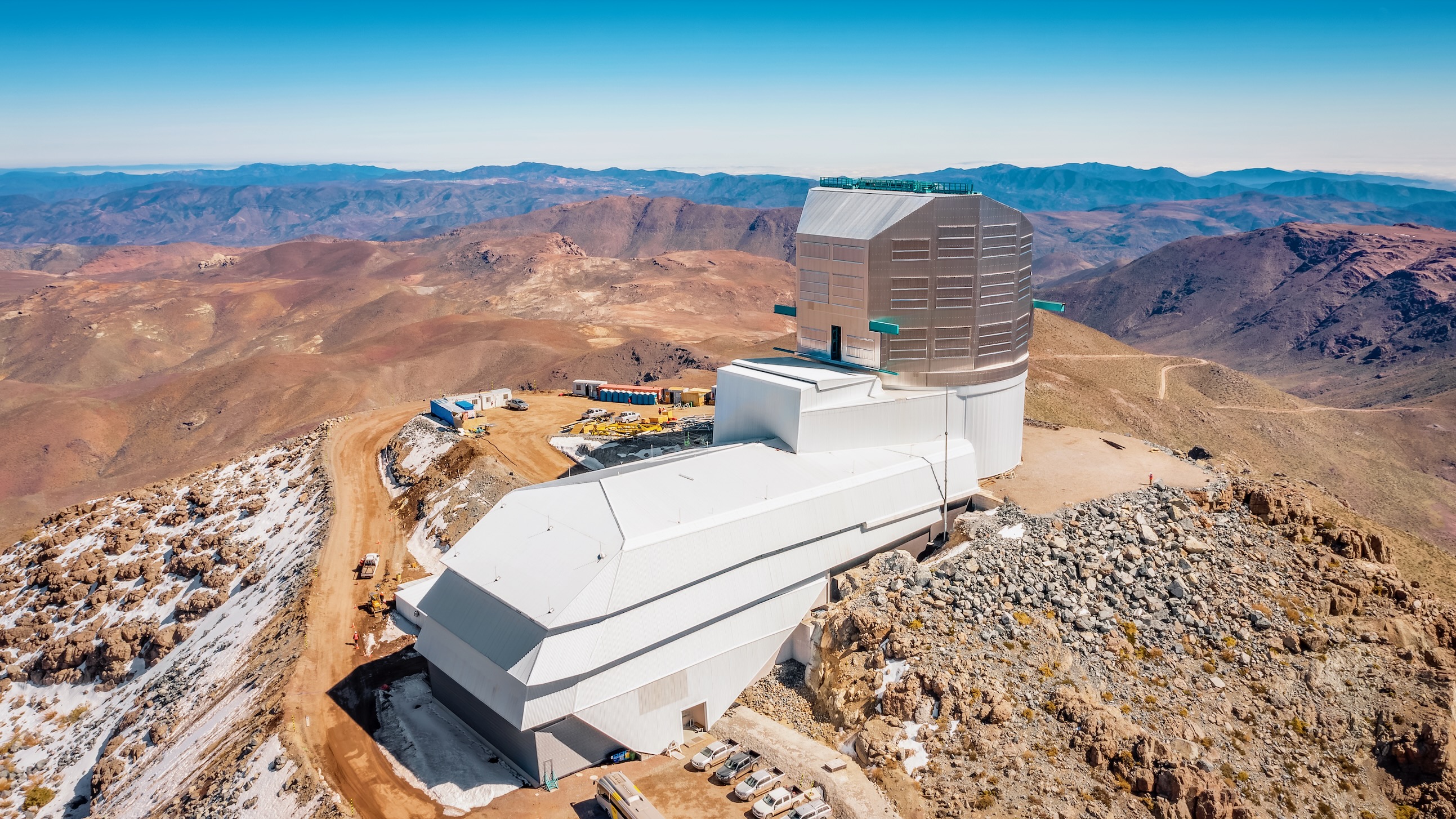Solar Storms Sparked By Giant 'Magnetic Rope,' Study Finds

A giant "magnetic rope" made up of twisting magnetic field lines could produce the strong electric currents that trigger solar storms, a new study finds.
Researchers at George Mason University sifted through data from NASA's Solar Dynamics Observatory (SDO) to study the magnetic rope phenomenon. Scientists have predicted that this rope is the cause of violent eruptions on the sun, but have previously struggled to prove its existence because of how quickly it moves.
Confirming the magnetic rope's existence would not only help astronomers understand the formation of solar storms, but would also be a key first step toward mitigating the adverse effects these eruptions can have on satellite communications on Earth. [Amazing New Sun Photos from Space]
Jie Zhang, an associate professor in the department of physics and astronomy at George Mason University, and graduate student Xin Cheng closely examined images taken by SDO's Atmospheric Imaging Assembly (AIA) telescope.
The researchers were able to pinpoint an area on the sun where a magnetic rope was forming. The AIA telescope captures images of the sun every 10 seconds, 24 hours a day.
"The magnetic rope triggers a solar eruption," Zhang said in a statement. "Scientists have been debating whether or not this magnetic rope exists before a solar eruption. I believe that the result of this excellent observation helps finally solve this controversial issue."
Powering solar storms
Breaking space news, the latest updates on rocket launches, skywatching events and more!
It is widely believed that magnetic fields in the sun play an essential role in storing energy and powering solar storms. Yet, the exact form that magnetic field lines take prior to eruptions is not well understood. Most field lines are semicircular loops with their foot-points rooted on the surface of the sun. As a result, they cannot erupt easily, and in fact, they often can prevent eruptions.
Scientists suspected that the magnetic rope, if it indeed exists, is the phenomenon that powers eruptions. A magnetic rope contains many magnetic field lines wrapping around a center axis and possibly twisting around each other.
Because of the twisting, a strong electric current can be carried by the magnetic rope. Theoretically, the electric current could produce enough electromagnetic force to overcome the overlying constraining force from other field lines and power the magnetic rope to move outward. [Photos: Sunspots on Earth's Star]
Images from the AIA telescope now reveal that, prior to eruption, there is a long and low-lying channel running through the entire active region, which heats to a scorching-hot temperature and slowly rises. When it reaches a critical point, it starts to erupt quickly.
This feature is distinctly different from the surrounding magnetic field lines, and the intensely hot channel is now believed to be the magnetic rope that scientists have been looking for.
More than just a pretty picture
Solar storms are violent eruptions on the sun that send a wave of charged particles, called plasma, into space at the speed of more than one million miles per hour. The cloud of plasma carries with it a strong magnetic field.
Sometimes these plasma clouds are directed at Earth, and can deposit a large amount of energy into the planet's magnetosphere.
Normally, the Earth's magnetosphere acts as a shield from these harmful particles and protects the environment. But a solar storm has the potential to disrupt the shielding effect, and severe space weather can have harmful effects on a wide array of technological systems, including satellite operations, communications, navigation and electric power grids.
Studies of space weather aid in the development of early warning systems for solar storms and help to minimize the damage from turbulent solar activity, researchers said.
"Understanding the eruption process of these storms will definitely help us better predict them," Zhang said. "We cannot prevent solar storms, just like we cannot prevent earthquakes or volcanoes. But the development of prediction capacity can help mitigate adverse effects. For instance, satellite operators can power-down key systems to prevent the possible damage to the systems."
The results of the study were reported at the American Astronomical Society Solar Physics Division Meeting, which is being held from June 12 to 16 at New Mexico State University in Las Cruces.
Follow SPACE.com for the latest in space science and exploration news on Twitter @Spacedotcom and on Facebook.
Join our Space Forums to keep talking space on the latest missions, night sky and more! And if you have a news tip, correction or comment, let us know at: community@space.com.

Space.com is the premier source of space exploration, innovation and astronomy news, chronicling (and celebrating) humanity's ongoing expansion across the final frontier. Originally founded in 1999, Space.com is, and always has been, the passion of writers and editors who are space fans and also trained journalists. Our current news team consists of Editor-in-Chief Tariq Malik; Editor Hanneke Weitering, Senior Space Writer Mike Wall; Senior Writer Meghan Bartels; Senior Writer Chelsea Gohd, Senior Writer Tereza Pultarova and Staff Writer Alexander Cox, focusing on e-commerce. Senior Producer Steve Spaleta oversees our space videos, with Diana Whitcroft as our Social Media Editor.
